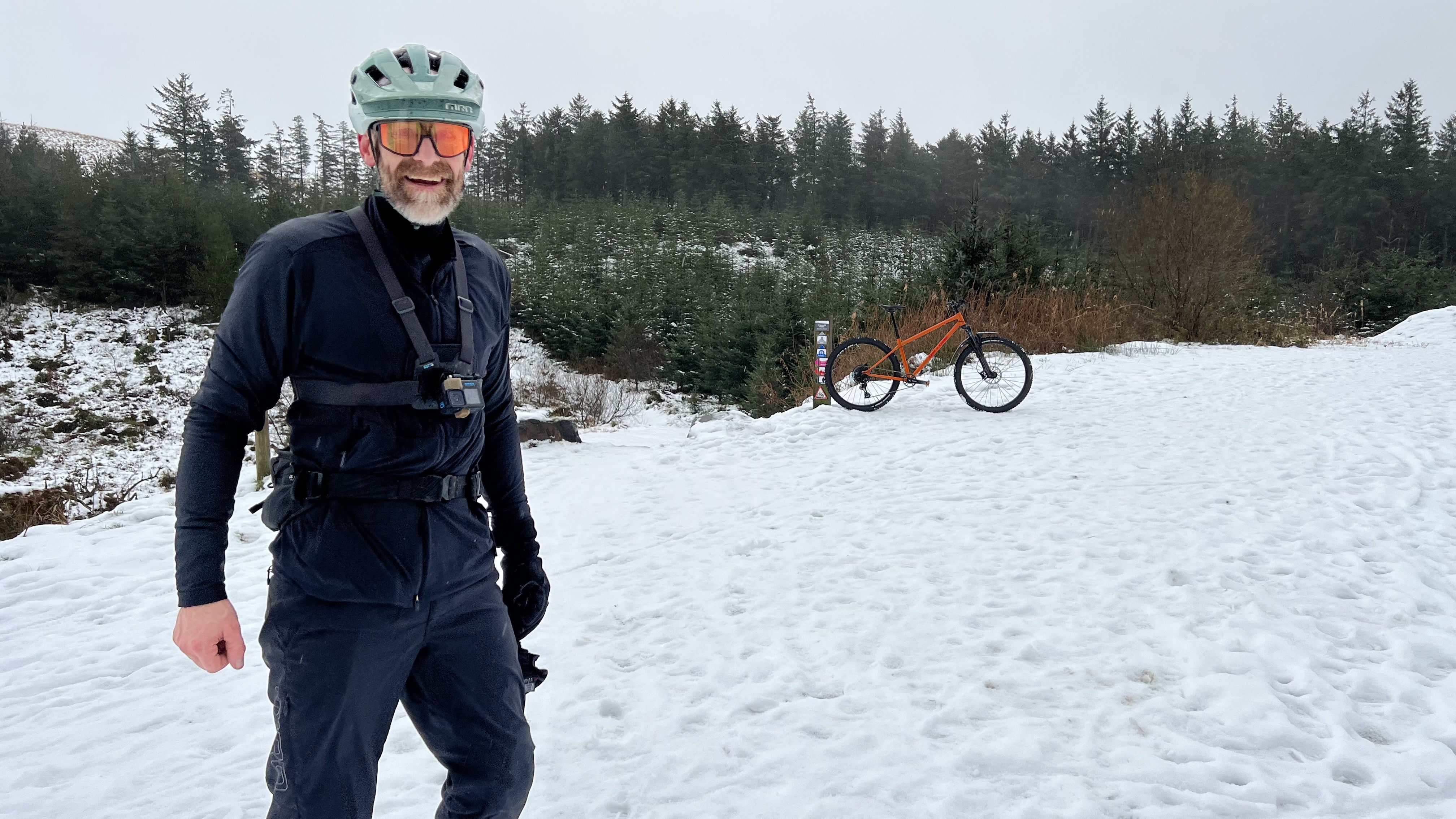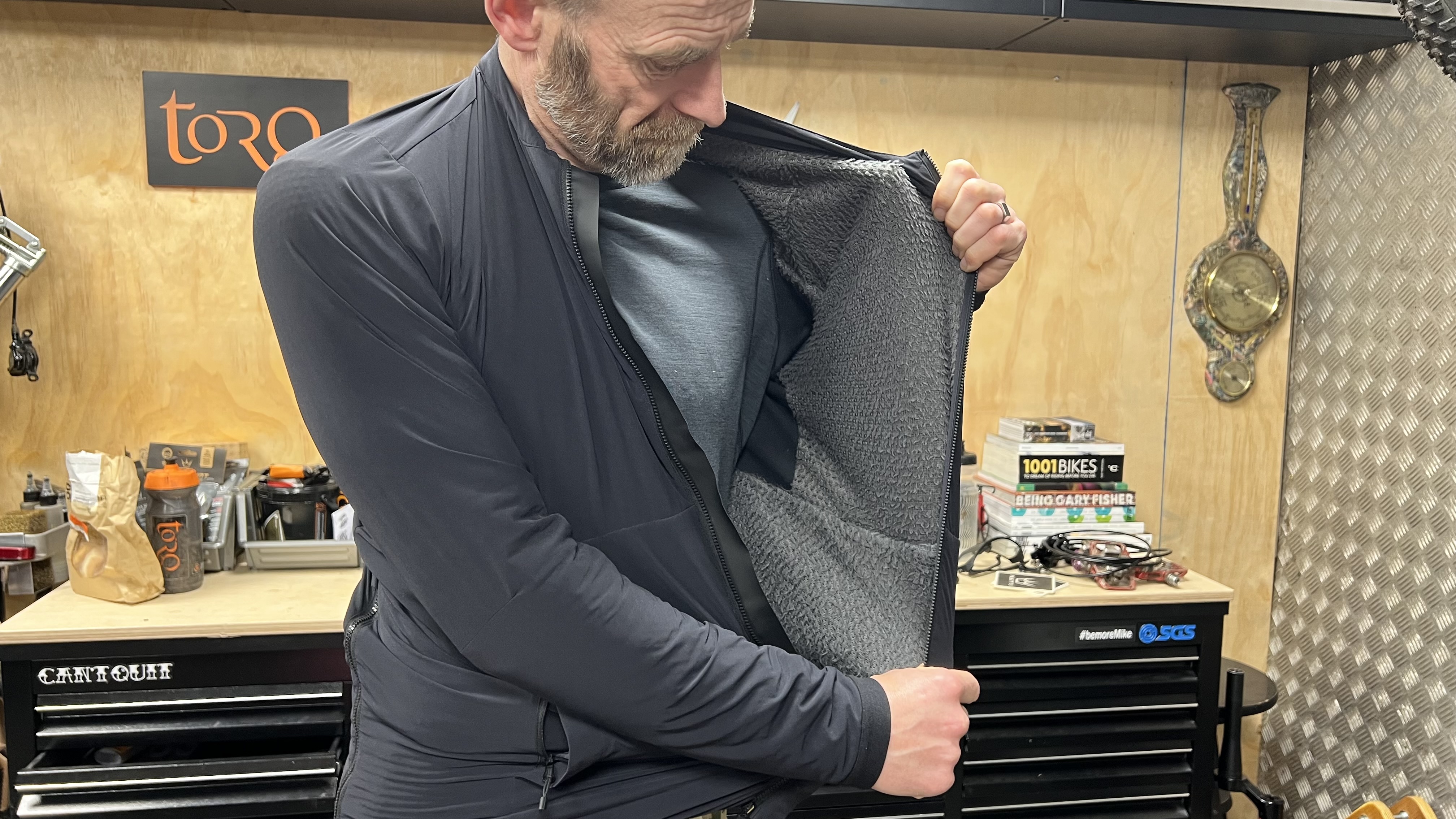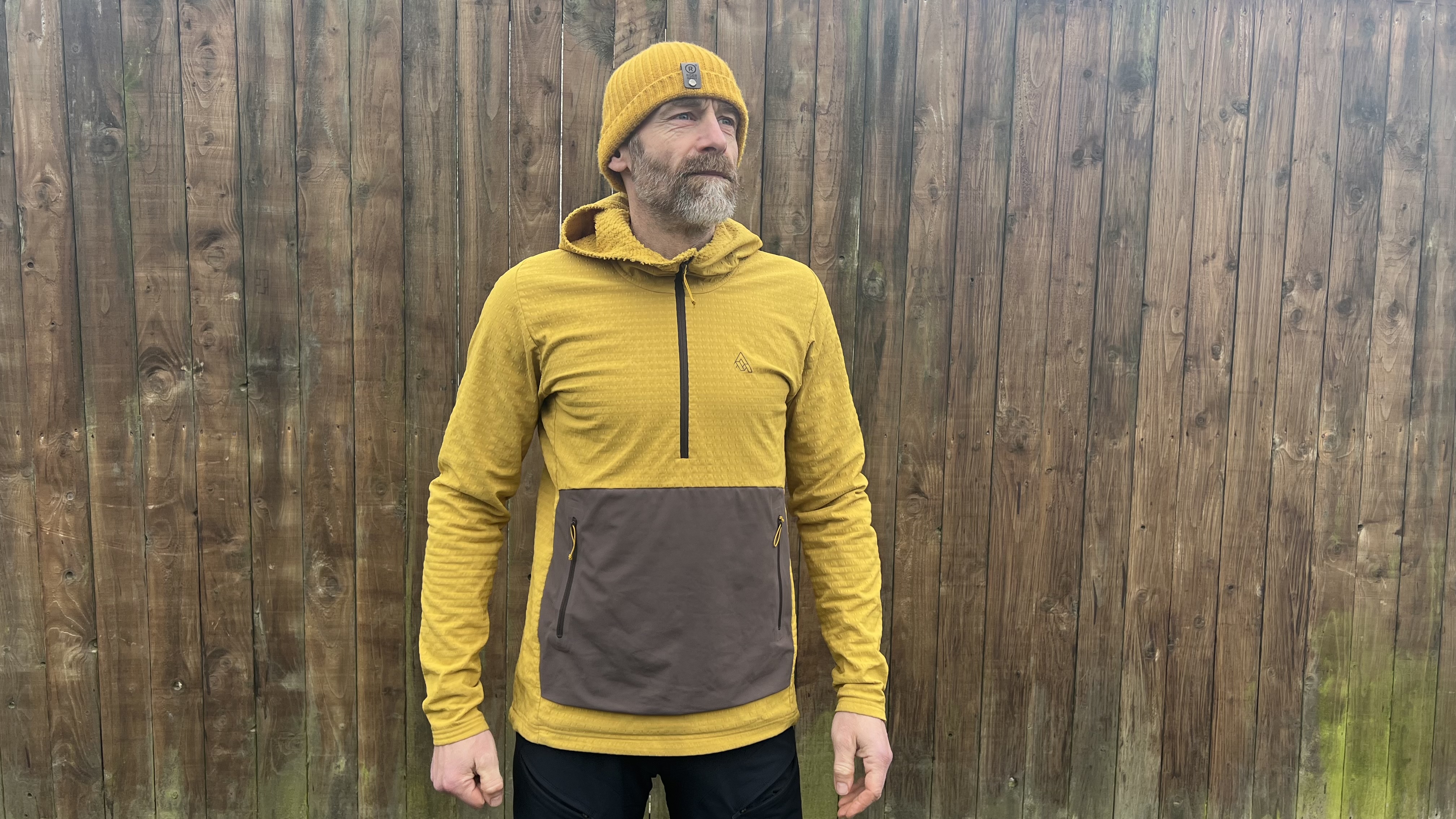Bespoken Word – release the fleece
After spending the winter months marvelling at the latest 'super fleeces' Guy Kesteven reckons it's time to stop following the flock and dress like them instead

Use the word ‘fleece’ and people tend to think of their dullest relative/teacher/co-worker or urban icons rocking a wolf print on their mobility scooter. I'm no stranger to the sartorial splendour of a lupine emblazoned pullover either, but I reckon the latest ‘smart fleece’ fabrics are also the ultimate in versatile, hi-tech riding gear for those brave enough to break away from the flock.
Wolf in sheep's clothing
When I say ‘smart fleece’ I’m not talking about a particularly well tailored or tidy looking fluffy jacket, I’m talking about the latest fleeces that benefit from smart technology. These can either be a single fabric engineered with different inner and outer faces (and therefore performance) like 7Mesh’s WTV, Primaloft Evolve or Polartec Powergrid. Or a composite sandwich like the various Polartec Alpha or PrimaLoft Active options where a fleece backer floats inside a separate sheet of shell fabric.
Both these ideas have been around for decades in various synthetic forms like the legendary shag pile and Pertex combo of Buffalo jackets, pure pile jackets from Patagonia, Helly Hansen and others or the earliest ‘Windstopper’ membrane infused fleeces from Gore-Tex. All the synthetic forms obviously have earlier organic versions like Ventile, Fisherman's sweaters (which used unwashed wool so the natural lanolin grease created a very effective DWR water shrugging layer) and start with whichever smart, upright citizen first skinned something furry and wore it’s outsides inside out. The basic principle being that lofted (raised) fibres trap a lot of warm air between them which creates a very effective insulation layer that doesn’t affect mobility, weight or packability like solid insulation can.
The difference with the latest generation of fabrics/garment is how well they manage sweat and heat. Wool retains it’s thermal properties when wet which is a rare and wonderful thing, but it’s very heavy when it’s soggy and takes an age to dry out. Early pile jackets were massively hydrophobic so water just slithered off them rather than being sucked off your skin. So while you were warm in them whatever the weather (generally roasting TBH) you’d be soaked with sweat and need to open the huge side zips to add some air con.
The thing with WTV and Polartec Powergrid / Alpha etc. is that the fleece element now wicks sweat off your skin (or baselayer) very efficiently. Significantly more efficiently than more ‘solid state’ soft shells and definitely more efficiently than ‘hard shell’ waterproof fabrics. Depending on the face fabric used, there’s generally more wind penetration from the outside inwards to help regulate heat and speed up vapor evacuation. The other big bonus with these fabrics is that they’re quiet to wear and have a much more natural ‘cosy rather than clammy’ feel from the inside. That makes them a lot nicer to wear with a very thin or short sleeved base layer or totally ‘commando’ if you get too hot. So far, my WTV jacket has proved super tough too, although Polartec Alpha needs protecting if it’s sharing a washing machine with any Velcro or similar ‘hook and loop fastener’ fabrics.

Lack of proof
The rise of the ‘Super Fleece’ not only sounds like a Marvel movie not many people would watch but it also coincides with the demise of the ‘best’ waterproofs. Well maybe that’s a bit strong and perhaps ‘best’ is the wrong term to use for jackets that rely on toxic chemicals to help keep the water out. Unfortunately the fact is like a lot of ‘eco’ things such as laundry powder, washing up liquid etc, reducing how much they poison the planet also makes DWR (Durable Water Repellency) treatments less effective. So then you’re left with a fabric that’s still waterproof (presuming the internal membrane works) but is so soaked that it ‘breathes’ even worse and also sucks heat away from you even faster making you cold. In fact, from decades of bitter experience I’m always colder in a waterproof than a soft shell when riding and with waterproofs getting less ‘proofy’ and fleeces getting cleverer that’s only going to get more obvious.

Sheepish
There is one big problem with smart fleeces though and ironically that’s people’s sheep like inability to break away from the flock and try something different. However many times I tell people to stop using waterproofs for anything but torrential conditions or uplift days where you’re not generating much sweat they just won’t hear it. And to be honest even I’ve been guilty of a little bit of this while testing the latest super fleeces. While Polartec Alpha and similar shelled fabrics have at least some obvious ‘weather shield’ to believe in when you’re picking kit for a ride, 7Mesh’s WTV doesn’t even look warm, let alone weatherproof. The light weight, soft feel and air permeability of these fabric doesn’t help instill confidence either. That makes it a real leap of faith to break the ‘better the devil you know’ habit and commit to a totally new approach to staying comfortable on the bike.
Having spent the last few months riding these fabrics in increasingly wet, cold conventional clothing defeating weather, I can genuinely say the results are remarkable. In fact in the case of the 7Mesh Chilco Anorak I’ve lived in almost exclusively since it arrived the results are borderline miraculous. But while I still get nervous heading out into the rain/sleet showers in temperatures hovering around freezing, it’s still somehow managed to be as comfortable then as it is cruising around on dry nearer double figure days or just hanging out and enjoying the Telly Tubby 'La La' vibe.
And while these cutting edge super fleece fabrics might currently be an eye wateringly expensive investment (but still cheaper than a ‘waterproof’ that’ll almost certainly be less comfortable and less versatile) now, I wouldn’t be surprised if copycat fabrics soon appear for a much lower price. And that would be another great reason to get yourself a fantastic fleece rather than a crap coat, but don’t worry, I still won’t expect you to actually believe me until you’ve tried one yourself.

Guy Kesteven has been working on Bike Perfect since its launch in 2019. He started writing and testing for bike mags in 1996. Since then he’s written several million words about several thousand test bikes and a ridiculous amount of riding gear. He’s also penned a handful of bike-related books and he reviews MTBs over on YouTube.
Current rides: Cervelo ZFS-5, Specialized Chisel, custom Nicolai enduro tandem, Landescape/Swallow custom gravel tandem
Height: 180cm
Weight: 69kg
